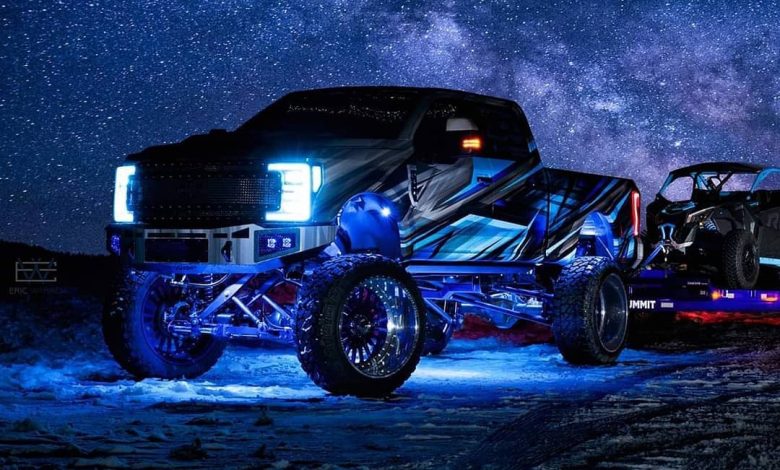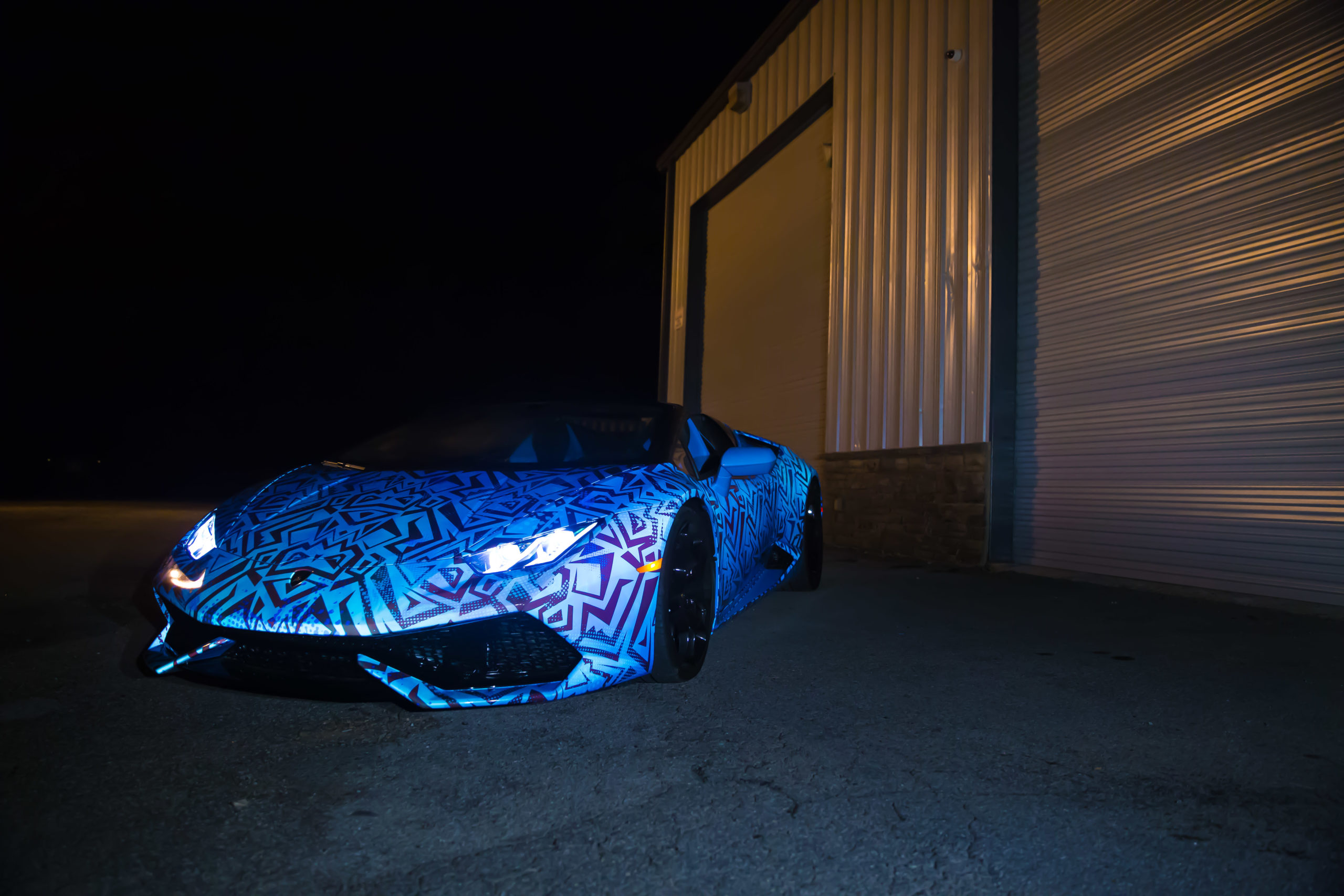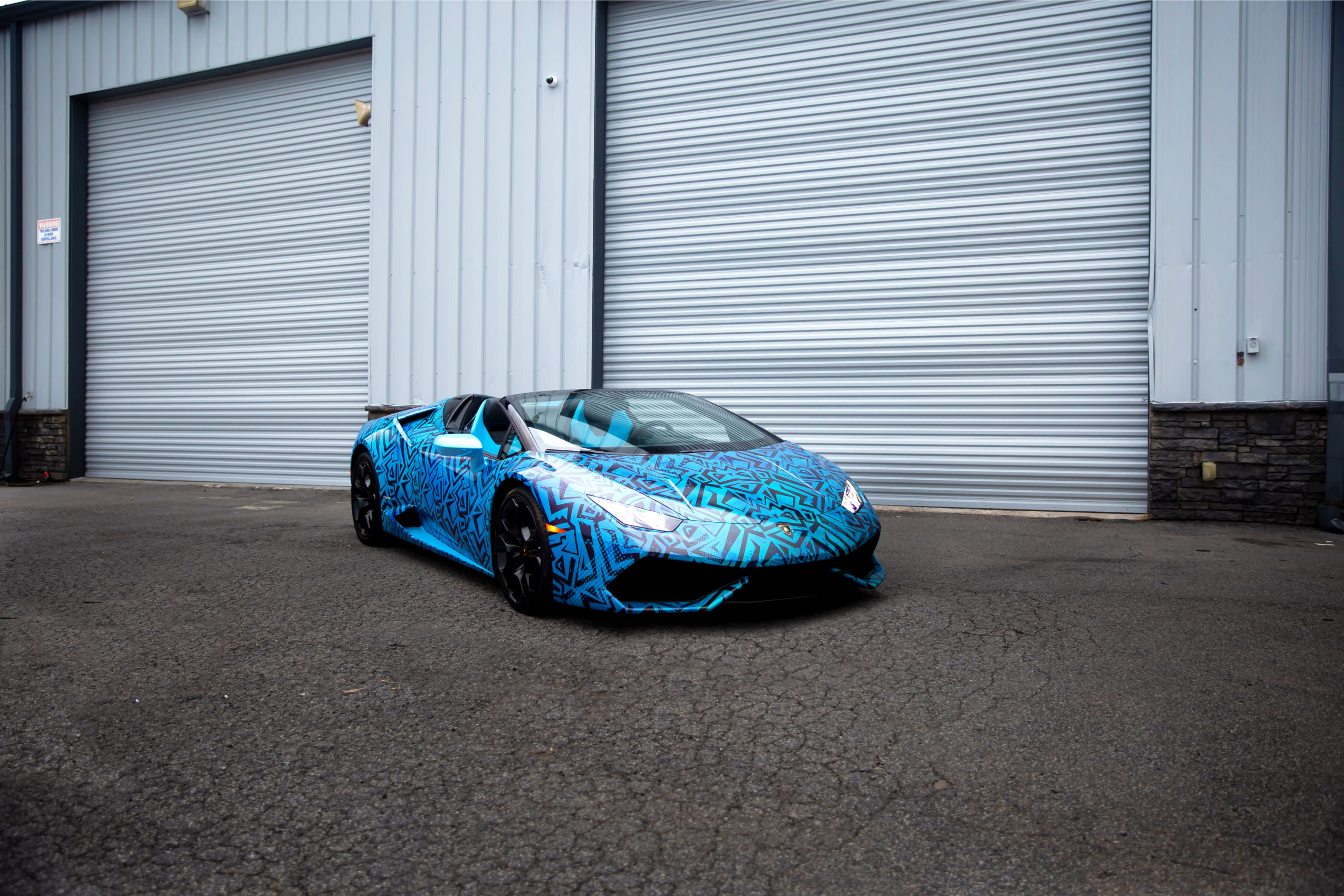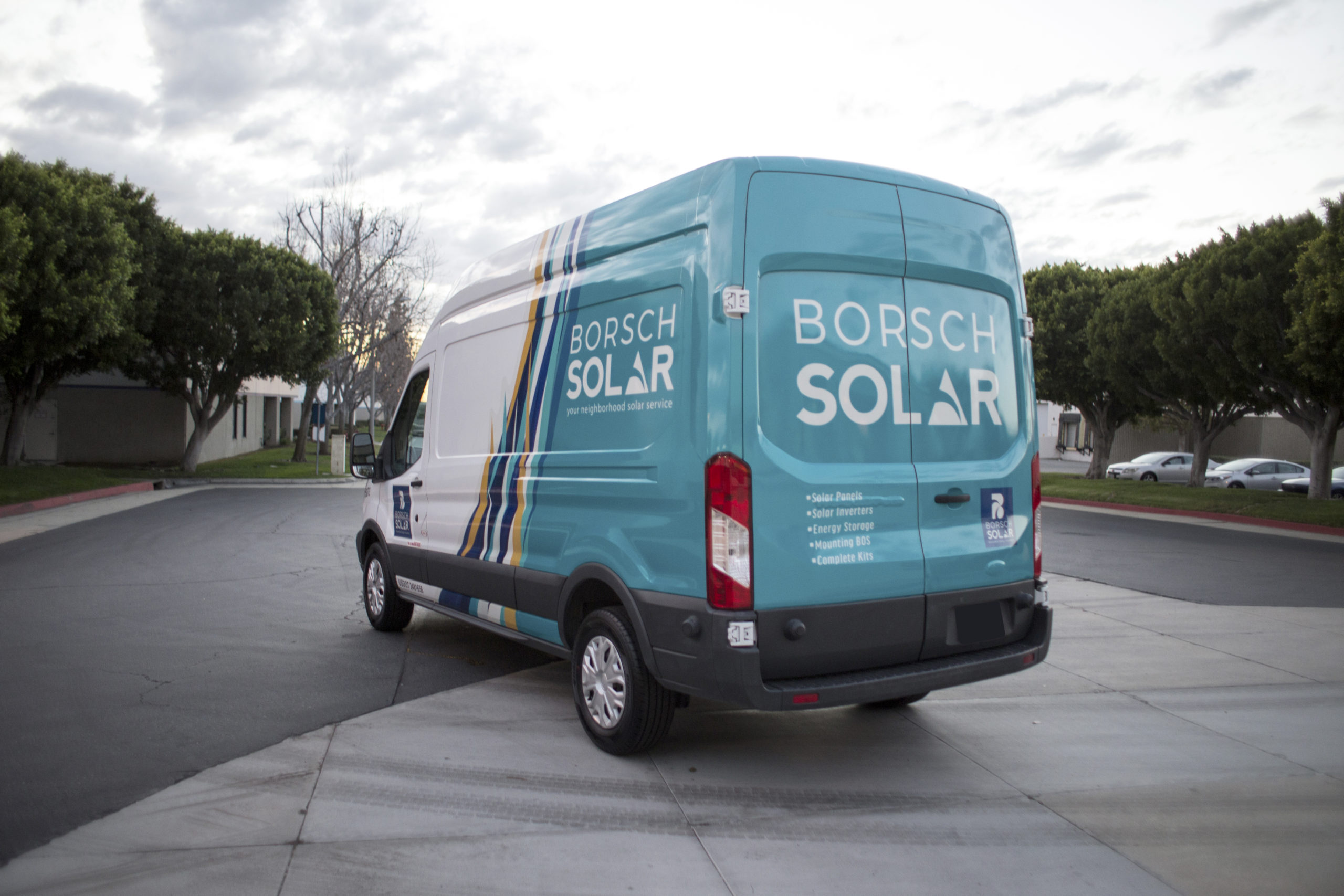Adding Reflective Material to Your Wrap Designs
Reflective wrap media can be profitably integrated into full-vehicle wraps
Any time you pass an emergency vehicle at night-and hopefully do not have one sitting behind you, its lights blazing-you’re instantly dazzled by the incredibly dazzling and high-visibility images offered by reflective tape on its emblems and along its chassis.
Those reflective materials are just part of the overall wrap job arsenal, and becoming an expert in their usage and their uniquely specific installation process can open up a whole new line of opportunities. And that’s not just local law enforcement or EMS, but a litany of other need-to-be-seen applications, including advertising and some very high-visibility show car wrap jobs.
Tammy Bui, product manager for Arlon Graphics LLC, says reflective films come in two basic variations, glass bead and prismatic films. Both are unique from the more typical family of cast or calendared vinyl films because of the special components included to help them produce light.
“Glass bead reflective films typically include a layer of densely scattered, spherical glass beads and a layer of metallized aluminum underneath,” she says. “Prismatic films, on the other hand, can get very intricate with the way their metalized microstructures are set up to reflect back the most optimal amount of light.”
As a result, Bui says glass bead films are more suitable for advertising wraps, decals and general signage, because they reflect back less intense light. Prismatic films have a much higher light intensity and are more often used in safety functions, such as roadway signage or as safety markings on emergency vehicles.
Joshua Barnard, product manager for Avery Dennison Graphics Solutions, says the main value of expertise with reflective materials is to give a sign shop a bit of an edge over the competition, given the unique applications possible.
“Not only can this help shops stand out from the rest, but it is also a great way to quickly increase revenue by upselling,” he says. “Shops should focus on explaining the benefits of reflective materials, such as improving the safety of the fleet’s drivers and reducing collisions.”
Nate Place, senior technologist with 3M Commercial Solutions technical services, says that reflective films are typically three times thicker than traditional films and contain a metalized layer that’s necessary for retroreflection. That durability also adds to its cost, as well as some added stiffness and stretching challenges during install jobs.
“Reflective media tends to be more expensive due to its multi-layer construction-engineer-grade beaded reflective films can have as many as six layers in the construction, compared to the two or three layers of non-reflective films,” Place says.
The two products’ makeup also means different usage and application strategies. Bui says the glass bead films can be stretched, to a degree, without compromising their reflectivity.
“But if you were to stretch a prismatic film, the stiff structure-typically a brittle acrylic film-would break and instantly lose its reflectivity,” she says. “Both are the underdogs of graphic films because not only do you get visibility of your graphic during the day, they also provide great advertising at night, especially when headlights are shined upon them.”
Glass bead films are subject to what is called ‘bruising’-over-stretching the material can re-distribute or damage the glass beads and impact nighttime reflectivity.
“One tip is to check your install periodically with a light source, as this can help you detect defects and make corrections to your installation tactics long before the entire application is complete,” says Place.
As a result, installers may need some coaching or to consult a manufacturer’s training materials to become experts at wrapping complex curves and corners, and still retain the highest reflectivity.
“Most reflective media will also include permanent adhesives that are aggressive and make repositioning and removal challenging,” Place adds. “Stacking and overlapping multiple layers can leave thick edges and bridge areas that fall victim to abrasion and the rigors of mother nature.”
Several glass bead products, including Arlon’s IllumiNITE Wrap and 3M’s Scotchlite 780mc-10R Print Wrap Film, do address those challenges with a little more flexibility, while Avery Dennison’s OmniCube prismatic film boasts an incredibly high level of reflectivity, requiring just a bit more attention during the installation process.
You still have the ability to custom print on reflective materials, though you’ll need to balance image density with maintaining the substrate’s reflective qualities. Bui suggests printing with latex, eco-solvent or regular solvent to get the maximum results.
“It is also UV-printable, but UV inks tend to be very thick and opaque and can essentially hide the reflectivity of the product,” she adds. “However, this can also give customers a creative edge in designing their graphic in a way that would really make the reflective contrast ‘pop’ from the UV print.”
That flexibility has led to some interesting applications, above and beyond emergency vehicles, Place says. “Many talented designers have found creative ways to incorporate reflective film into basic applications and full-blown 360-degree wraps to create that nighttime ‘wow’ factor. The product also offers a great way to increase visibility and safety in exterior wall applications, ranging from retail signage to way finding.”
Clearly, when working with clients in the police, fire and EMS fields, it’s critical to make sure that your product choice (and usage) meets government standards.
“As a graphics manufacturer or installer, it is always a good choice to check state and local ordinances to see if there are minimum reflective performance requirements needed for municipal vehicles,” says Place. “Brightness and color are typically two areas that would be regulated. Specific ASTM performance standards may need to be met for certain uses of reflective film.”
Barnard says one regulation he is aware of is DOT C2, which states that trucks over 10,000 pounds and wider than 80 inches must use DOT C2-approved reflective tape to mark their trailers.
“For North America, reflective films are typically classified under ASTM-D 4956, which identifies the type of reflective film, adhesive backing and typical applications on where to use,” adds Bui. “Our IllumiNITE Wrap is certified as Type 1, Class 3 engineer-grade film.”





